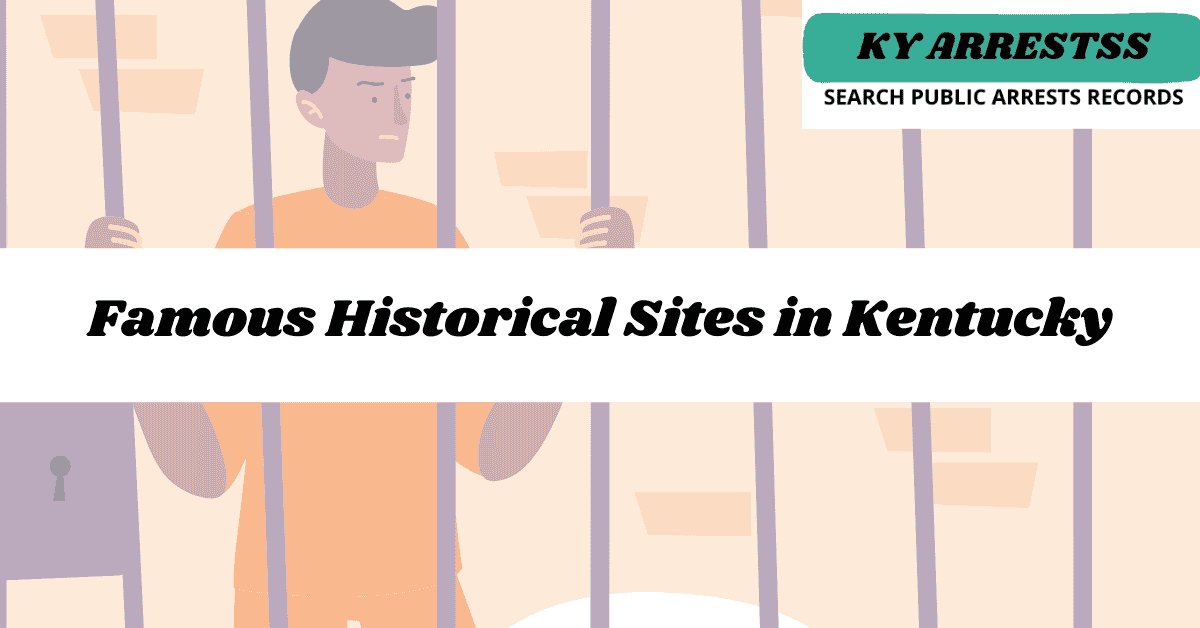Famous Historical Sites in Kentucky
Kentucky, known as the “Bluegrass State,” is not just renowned for its rolling hills and thoroughbred horse farms but also for its rich historical heritage. From sprawling national parks to meticulously preserved landmarks, Kentucky offers a plethora of historical sites that capture the essence of its past. Let’s embark on a journey to explore some of the most famous historical sites in Kentucky.
Mammoth Cave National Park
Nestled in the heart of Kentucky’s rugged landscape lies Mammoth Cave National Park, home to the world’s longest known cave system. This natural wonder has fascinated explorers and scientists for centuries, with its labyrinthine passages and stunning rock formations. Beyond its geological marvels, Mammoth Cave holds significant historical importance, having served as a shelter for Native American tribes, a hideout for outlaws, and even a wartime source of saltpeter. Visitors to the park can embark on guided tours that showcase the cave’s beauty and provide insight into its rich history.
Abraham Lincoln Birthplace National Historical Park
Kentucky proudly claims Abraham Lincoln as one of its native sons, and the Abraham Lincoln Birthplace National Historical Park pays homage to the 16th President of the United States. Situated on the site where Lincoln was born, this park features a symbolic birthplace cabin, a memorial building, and interpretive exhibits that chronicle Lincoln’s early years in Kentucky. Visitors can explore the park’s picturesque grounds and gain a deeper understanding of Lincoln’s humble beginnings and enduring legacy.
Shaker Village of Pleasant Hill
Step back in time at the Shaker Village of Pleasant Hill, a meticulously preserved community that offers a glimpse into Kentucky’s Shaker heritage. Founded in the early 19th century, this idyllic village once thrived as a communal society known for its craftsmanship, innovative farming practices, and simple way of life. Today, visitors can wander through restored buildings, participate in hands-on activities, and immerse themselves in the timeless tranquility of Shaker culture.
Fort Boonesborough State Park
Experience the rugged frontier spirit at Fort Boonesborough State Park, a living history museum that transports visitors to Kentucky’s pioneer days. Originally established by legendary frontiersman Daniel Boone in 1775, Fort Boonesborough played a pivotal role in Kentucky’s early settlement and defense. Today, the fort’s reconstructed cabins, stockades, and artisan workshops offer a glimpse into life on the Kentucky frontier, while interactive demonstrations and reenactments bring history to life for visitors of all ages.
Cumberland Gap National Historical Park
Journey to the gateway of the West at Cumberland Gap National Historical Park, where rugged mountains and lush valleys converge to form a natural passageway through the Appalachian Mountains. For centuries, Cumberland Gap served as a vital corridor for Native American tribes, European settlers, and westward-bound pioneers, shaping the course of American history. Visitors can hike along scenic trails, explore historic overlooks, and delve into the park’s rich cultural heritage at the visitor center.
Historic Districts of Louisville
Discover the architectural splendor and vibrant culture of Louisville’s historic districts, where stately homes, charming neighborhoods, and bustling commercial districts tell the story of the city’s past. From the grandeur of Old Louisville to the quaint charm of Butchertown, each district offers its own unique blend of history, art, and community. Visitors can stroll along tree-lined streets, admire historic landmarks, and immerse themselves in Louisville’s rich cultural tapestry.
National Underground Railroad Museum
Delve into the harrowing history of the Underground Railroad at the National Underground Railroad Museum in Maysville, Kentucky. As a crucial hub on the Underground Railroad network, Kentucky played a pivotal role in aiding enslaved individuals seeking freedom in the North. Through interactive exhibits, artifacts, and educational programs, the museum sheds light on the bravery and resilience of those who risked everything to escape the bonds of slavery.
Ashland: The Henry Clay Estate
Experience the grandeur of antebellum Kentucky at Ashland, the historic estate of statesman Henry Clay. Set amidst lush gardens and rolling lawns, Ashland offers a glimpse into the life and legacy of one of Kentucky’s most influential figures. Visitors can tour the mansion, explore the grounds, and learn about Clay’s contributions to American politics and society.
Churchill Downs
Feel the excitement and pageantry of the “Run for the Roses” at Churchill Downs, home of the world-famous Kentucky Derby. Since its inception in 1875, the Kentucky Derby has captivated audiences with its thrilling horse races, extravagant fashion, and festive atmosphere. Visitors to Churchill Downs can tour the historic racetrack, visit the Kentucky Derby Museum, and witness the timeless tradition of “the most exciting two minutes in sports.”
Kentucky Horse Park
Celebrate the beauty and majesty of the horse at the Kentucky Horse Park, a sprawling equestrian-themed attraction in Lexington. Showcasing Kentucky’s rich equine heritage, the park features museums, barns, and arenas dedicated to all aspects of horse care, training, and competition. Visitors can marvel at rare breeds, watch captivating demonstrations, and even take a scenic horse-drawn carriage ride through the park’s picturesque grounds.
Old Fort Harrod State Park
Step into Kentucky’s frontier past at Old Fort Harrod State Park, where history comes to life amidst reconstructed cabins, stockades, and period furnishings. Originally built in 1774 by James Harrod, Kentucky’s first permanent European settler, Fort Harrod served as a crucial outpost in the wilderness of the Kentucky frontier. Today, visitors can explore the fort’s grounds, interact with costumed interpreters, and gain insight into the challenges and triumphs of Kentucky’s early pioneers.
Locust Grove
Experience the elegance of early 19th-century Kentucky at Locust Grove, the historic estate of George Rogers Clark, Revolutionary War hero and frontier leader. Set amidst rolling countryside and verdant gardens, Locust Grove offers a glimpse into the lives of Kentucky’s elite during the early days of statehood. Visitors can tour the beautifully restored mansion, stroll through the gardens, and learn about the legacy of the Clark family and their contributions to Kentucky history.
Perryville Battlefield State Historic Site
Commune with the ghosts of the Civil War at Perryville Battlefield State Historic Site, where one of the war’s bloodiest battles unfolded in the fields and woodlands of central Kentucky. The Battle of Perryville, fought in 1862, marked a crucial turning point in the conflict’s Western Theater and left an indelible mark on the landscape and people of Kentucky. Today, visitors can explore the battlefield, visit the museum and visitor center, and pay tribute to the soldiers who fought and died on these hallowed grounds.
FAQs
What is the significance of Mammoth Cave National Park in Kentucky?
Mammoth Cave National Park is renowned for its extensive cave system, recognized as the world’s longest with over 400 miles explored. It holds historical importance as it served as a shelter for Native Americans, and later became a significant site for mining saltpeter during the War of 1812. Its vast chambers and intricate limestone formations make it a captivating destination for tourists and spelunkers alike.
What makes the Kentucky Derby Museum a must-visit historical site?
The Kentucky Derby Museum offers an immersive experience into the rich history and culture of the iconic Kentucky Derby, the longest-running sporting event in the United States. Visitors can explore exhibits showcasing the race’s legendary horses, jockeys, and the evolution of the event since its inception in 1875. It provides a glimpse into the glamour, excitement, and traditions that have made the Derby a beloved institution worldwide.
How does Abraham Lincoln’s Birthplace Park honor his early life?
Abraham Lincoln’s Birthplace National Historical Park preserves the humble beginnings of one of America’s most revered leaders. The park features a symbolic birthplace cabin, representative of the one where Lincoln was born, and the imposing Lincoln Memorial Building housing artifacts and exhibits recounting his life and legacy. It serves as a poignant reminder of Lincoln’s enduring influence and his connection to the state of Kentucky.
What historical significance does Shaker Village of Pleasant Hill hold?
Shaker Village of Pleasant Hill is a living testament to the utopian Shaker community that thrived in the early 19th century. Set amidst picturesque countryside, it preserves over 30 historic buildings where visitors can immerse themselves in the Shaker way of life through guided tours and hands-on activities. This well-preserved site offers insights into the community’s unique architecture, craftsmanship, and commitment to simplicity and communal living.
Why is Fort Boonesborough State Park notable in Kentucky’s history?
Fort Boonesborough State Park pays homage to the pioneering spirit of early settlers in Kentucky, particularly Daniel Boone, who established the fort in 1775. As one of the earliest permanent American settlements west of the Appalachian Mountains, it played a crucial role in the westward expansion and defense against Native American attacks. Today, visitors can explore reconstructed cabins, engage in living history demonstrations, and learn about the challenges and triumphs of frontier life.
Conclusion
Kentucky’s historical sites offer a captivating journey through time, allowing visitors to connect with the state’s rich heritage and storied past. From natural wonders like Mammoth Cave to iconic landmarks like the Kentucky State Capitol, each site provides a unique glimpse into the diverse tapestry of Kentucky’s history and culture. Whether you’re a history buff, nature enthusiast, or simply curious traveler, exploring these famous historical sites is sure to leave you with a deeper appreciation for the Bluegrass State’s enduring legacy.







